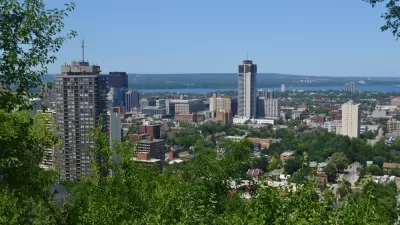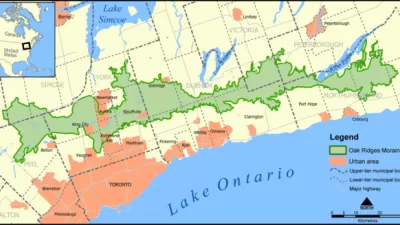A series of hasty removals of land from the protected Greenbelt last year were pushed through without environmental or financial analysis.

A report from Ontario’s Auditor-General reveals that the provincial government removed 3,000 hectares (7,400 acres) from Toronto’s protected Greenbelt to favor certain developers and without appropriate environmental or financial analysis.
As Jeff Gray explains in The Globe and Mail, “The report by Auditor-General Bonnie Lysyk also estimates, based on 2016 data from the Municipal Property Assessment Corp. (MPAC), that the landowners of the 15 formerly protected sites opened up for housing last year could see their worth balloon by more than $8.3-billion.”
The Greenbelt is a 800,000-hectare area surrounding the city created in 2005 to limit sprawl and protect local farmland. Last year, Premier Doug Ford’s government redrew its boundaries in an effort, according to Ford, to create 50,000 new units of much-needed housing.
According to the report, “All but one of the properties removed from the Greenbelt, in what the Auditor-General calls a ‘seriously flawed’ process that took just three weeks, were identified for a small group of civil servants assigned to work on the project by Ryan Amato, the chief of staff to Mr. Clark.” The article continues, “The extremely tight timeline and confidentiality provisions, the audit says, meant bureaucrats could not fully analyze the environmental impact or provide alternatives to the Greenbelt removals.”
FULL STORY: Ford’s Greenbelt removals ‘favoured’ certain developers, Ontario’s Auditor-General says

Study: Maui’s Plan to Convert Vacation Rentals to Long-Term Housing Could Cause Nearly $1 Billion Economic Loss
The plan would reduce visitor accommodation by 25,% resulting in 1,900 jobs lost.

North Texas Transit Leaders Tout Benefits of TOD for Growing Region
At a summit focused on transit-oriented development, policymakers discussed how North Texas’ expanded light rail system can serve as a tool for economic growth.

Why Should We Subsidize Public Transportation?
Many public transit agencies face financial stress due to rising costs, declining fare revenue, and declining subsidies. Transit advocates must provide a strong business case for increasing public transit funding.

How to Make US Trains Faster
Changes to boarding platforms and a switch to electric trains could improve U.S. passenger rail service without the added cost of high-speed rail.

Columbia’s Revitalized ‘Loop’ Is a Hub for Local Entrepreneurs
A focus on small businesses is helping a commercial corridor in Columbia, Missouri thrive.

Invasive Insect Threatens Minnesota’s Ash Forests
The Emerald Ash Borer is a rapidly spreading invasive pest threatening Minnesota’s ash trees, and homeowners are encouraged to plant diverse replacement species, avoid moving ash firewood, and monitor for signs of infestation.
Urban Design for Planners 1: Software Tools
This six-course series explores essential urban design concepts using open source software and equips planners with the tools they need to participate fully in the urban design process.
Planning for Universal Design
Learn the tools for implementing Universal Design in planning regulations.
City of Santa Clarita
Ascent Environmental
Institute for Housing and Urban Development Studies (IHS)
City of Grandview
Harvard GSD Executive Education
Toledo-Lucas County Plan Commissions
Salt Lake City
NYU Wagner Graduate School of Public Service





























